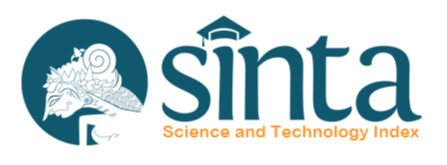The Analysis of the Chlorogenic Acid in the Ethanol Fraction of Robusta Coffee Beans and Its Effect on Glucose Levels in Wistar Rats
DOI:
https://doi.org/10.12928/dpphj.v15i2.4705Keywords:
Coffea canephora L., chlorogenic acid, glucoseAbstract
Background: The metabolic disorder caused by high blood glucose levels and pancreatic beta-cell damage is known as diabetes mellitus. Indonesia itself is the 7th country in the world with the number of people with diabetes mellitus. Indonesia occupies rank 7 in the world with the number of people with diabetes mellitus. Apart from that, robusta coffee (Coffea canephora L) is one of the most popular drinks globally, including Indonesia. Chlorogenic acid in coffee beans effectively reduces cell damage due to free radicals, including minimizing excessive glucose release from the liver into the blood. Objective: This study aimed to analyze the effects of chlorogenic acid in the ethanolic fraction of robusta coffee (Coffea canephora L) beans on blood glucose levels in Wistar rats. Method: The researchers applied an experimental study with a randomized pretest-posttest control group design. The beans of robusta coffee were extracted using the Maceration method and then fractionated using a hexane and ethyl acetate solvent. The concentration of the obtained remaining fraction was measured using a spectrophotometer. Furthermore, hyperglycemia testing included 30 Wistar rats induced with 20% glucose for 3 – 4 weeks. They were then given the ethanol fraction of robusta coffee with a dose of 400 mg/kg BW and 500 mg/kg BW. Meanwhile, metformin served as a positive control, and NaCMC served as a negative control. Results: The chlorogenic acid analysis in the ethanol fraction of robusta coffee on a spectrophotometer with a concentration of 37% indicated a decrease of 16.66% on the negative control and 48.06% on the positive control. Meanwhile, the ethanol fraction of each control was 51.53% and 52.16%, respectively. Conclusion: The ethanol fraction of the robusta coffee significantly affects the decrease in blood glucose levels in Wistar rats.References
2. Alan R. Saltiel JEP. Anti-oxidant and Anti-Diabetic Activities of Ethanolic Extract of Primula Denticulata Flowers. Indones J Pharm. 2016;27(2):74–9. DOI: https://doi.org/10.14499/indonesianjpharm27iss2pp74
3. Okada J, Osaki A, Shimoda Y, Yamada E, Saito T, Ozawa A, et al. Differences in the Effects of Kenyan, Tanzanian, and Ethiopian Coffee Intake on Interstitial Glucose Levels Measured by FreeStyle Libre: A Pilot Case Study. Curr Ther Res Clin Exp. 2020;93:100606. DOI: https://doi.org/10.1016/j.curtheres.2020.100606
4. Budiyani L, Purnamasari D, Simadibrata M, Abdullah M. Insulin Resistance in Gastroesophageal Reflux Disease. Acta Med Indones. 2018;50(4):336–42. DOI: https://doi.org/10.15605/jafes.03.02.07
5. Mishra V, Jyoti J, Kaur M, Mittal A. Sweet Future of Stevia : A Magical Sweetener Sweet Future of Stevia : A Magical Sweetener. 2019;(February 2018). DOI: https://doi.org/10.22159/ajpcr.2018.v11i2.20295
6. Sari DRAP, Ahmad FF, Djabir YY, Yulianty R. Breadfruit Leaves Extract (Artocarpus Altilis) Effect on Pancreatic Damage in Diabetic Type II Animal Model Induced by Alloxan–Nicotinamide. Med Clin Pract. 2020;3:100099. DOI: https://doi.org/10.1016/j.mcpsp.2020.100099
7. Refardt J, Winzeler B, Christ-Crain M. Diabetes Insipidus: An Update. Endocrinol Metab Clin North Am. 2020;49(3):517–31. DOI: https://doi.org/10.1016/j.ecl.2020.05.012
8. Curti V, Verri M, Baldi A, Dacrema M, Masiello I, Dossena M, et al. In vivo Modulatory Effect of Coffee (Coffea canephora var. Robusta) on the Expression Levels of Murine microRNA-124-3p Associated with Antioxidant Defenses. eFood. 2019; DOI: https://doi.org/10.2991/efood.k.190802.001
9. Santos RMM, Lima DRA. Coffee Consumption, Obesity and Type 2 Diabetes: A Mini-Review. Eur J Nutr. 2016 Jun;55(4):1345–58. DOI: https://doi.org/10.1007/s00394-016-1206-0
10. Ghaedi N, Pouraboli I, Askari N. Antidiabetic Properties of Hydroalcoholic Leaf and Stem Extract of Levisticum officinale: An Implication for α-amylase Inhibitory Activity of Extract Ingredients through Molecular Docking. Iran J Pharm Res IJPR. 2020;19(1):231–50. DOI: https://doi.org/10.31838/ijpr/2020.12.03.002
11. Morvaridi M, Rayyani E, Jaafari M, Khiabani A, Rahimlou M. The Effect of Green Coffee Extract Supplementation on Cardio Metabolic Risk Factors: A Systematic Review and Meta-Analysis of Randomized Controlled Trials. J Diabetes Metab Disord. 2020 Jun;19(1):645–60. DOI: https://doi.org/10.1007/s40200-020-00536-x
12. Wang Y, Peng S, Mei Z, Jin C, Kang J, Xiang M, et al. Chlorogenic Acid Inhibits Forming of Diabetes Mellitus in Rats Induced by High-Fat High-Sucrose and Streptozotocin. Pak J Pharm Sci. 2020 May;33(3):1063–72. DOI: https://doi.org/10.3389/fimmu.2020.01125
13. Guo CC, Zhang XY, Wang YX, Xie L, Chang CQ. [Effects of Chlorogenic Acid on Glucose Tolerance and Its Curve Characteristics in High-Fat Diet-Induced Obesity Rats]. Beijing Da Xue Xue Bao. 2020 Apr;52(2):269–74. DOI: https://doi.org/10.1093/cdn/nzaa045_010
14. Zuñiga LY, Aceves-De La Mora MCA De, González-Ortiz M, Ramos-Núñez JL, MartÃnez-Abundis E. Effect of Chlorogenic Acid Administration on Glycemic Control, Insulin Secretion, and Insulin Sensitivity in Patients with Impaired Glucose Tolerance. J Med Food. 2018;21(5):469–73. DOI: https://doi.org/10.1089/jmf.2017.0110
15. Naveed M, Hejazi V, Abbas M, Kamboh AA, Khan GJ, Shumzaid M, et al. Chlorogenic acid (CGA): A Pharmacological Review and Call For Further Research. Biomed Pharmacother. 2018;97(October 2017):67–74. DOI: http://dx.doi.org/10.1016/j.biopha.2017.10.064
16. Miao M, Xiang L. Pharmacological Action and Potential Targets of Chlorogenic Acid. 1st ed. Vol. 87, Advances in Pharmacology. Elsevier Inc.; 2020. 71–88 p. DOI: http://dx.doi.org/10.1016/bs.apha.2019.12.002
17. Barre DE, Mizier-Barre KA. The Polypharmacy Reduction Potential of Cinnamic Acids and Some Related Compounds in Pre- and Post-Onset Management of Type 2 Diabetes Mellitus. Endocr Regul. 2020 Apr;54(2):137–55. DOI: https://doi.org/10.2478/enr-2020-0017
18. Williamson G. Protection Against Developing Type 2 Diabetes by Coffee Consumption: Assessment of the Role of Chlorogenic Acid and Metabolites on Glycaemic Responses. Food Funct. 2020 Jun;11(6):4826–33. DOI: https://doi.org/10.1039/d0fo01168a
19. Asbaghi O, Sadeghian M, Nasiri M, Khodadost M, Shokri A, Panahande B, et al. The Effects of Green Coffee Extract Supplementation on Glycemic Indices and Lipid Profile in Adults: A Systematic Review and Dose-Response Meta-Analysis of Clinical Trials. Nutr J. 2020 Jul;19(1):71. DOI: https://doi.org/10.1186/s12937-020-00587-z
20. Santana-Gálvez J, Cisneros-Zevallos L, Jacobo-Velázquez DA. Chlorogenic Acid: Recent Advances on Its Dual Role as a Food Additive and a Nutraceutical Against Metabolic Syndrome. Molecules. 2017;22(3):7–9. DOI: https://doi.org/10.3390/molecules22030358
21. Kocak MZ, Aktas G, Erkus E, Yis OM, Duman TT, Atak BM, et al. Neuregulin-4 is Associated with Plasma Glucose and Increased Risk of Type 2 Diabetes Mellitus. Swiss Med Wkly. 2019;149(October):w20139. DOI: https://doi.org/10.4414/smw.2019.20139
22. Olivares AM, Althoff K, Chen GF, Wu S, Morrisson MA, DeAngelis MM, et al. Animal Models of Diabetic Retinopathy. Curr Diab Rep. 2017;17(10). DOI: https://doi.org/10.1007/s11892-017-0913-0
23. Riehle C, Bauersachs J. Of Mice and Men: Models and Mechanisms of Diabetic Cardiomyopathy. Basic Res Cardiol. 2019;114(1):1–22. DOI: https://doi.org/10.1007/s00395-018-0711-0
24. Azushima K, Gurley SB, Coffman TM. Modelling Diabetic Nephropathy in Mice. Nat Rev Nephrol. 2017;14(1):48–56. DOI: http://dx.doi.org/10.1038/nrneph.2017.142
25. Xu L, Li Y, Dai Y, Peng J. Natural Products for the Treatment of Type 2 Diabetes Mellitus: Pharmacology and Mechanisms. Pharmacol Res. 2018;130:451–65. DOI: http://dx.doi.org/10.1016/j.phrs.2018.01.015
26. Zilliox LA, Russell JW. Physical Activity and Dietary Interventions in Diabetic Neuropathy: A Systematic Review. Clin Auton Res. 2019;29(4):443–55. DOI: https://doi.org/10.1007/s10286-019-00607-x
27. Wang D, Hou J, Wan J, Yang Y, Liu S, Li X, et al. Dietary Chlorogenic Acid Ameliorates Oxidative Stress and Improves Endothelial Function in Diabetic Mice Via Nrf2 Activation. J Int Med Res. 2021;49(1). DOI: https://doi.org/10.1177/0300060520985363
28. Yin X-L, Xu B-Q, Zhang Y-Q. Gynura Divaricata Rich In 3, 5-/4, 5-Dicaffeoylquinic Acid and Chlorogenic Acid Reduces Islet Cell Apoptosis and Improves Pancreatic Function in Type 2 Diabetic Mice. Nutr Metab (Lond). 2018;15:73. DOI: https://doi.org/10.1186/s12986-018-0310-y
29. Reis CEG, Dórea JG, da Costa THM. Effects of Coffee Consumption on Glucose Metabolism: A Systematic Review of Clinical Trials. Vol. 9, Journal of Traditional and Complementary Medicine. 2019. p. 184–91. DOI: https://doi.org/10.1016/j.jtcme.2018.01.001
30. Yan Y, Zhou X, Guo K, Zhou F, Yang H. Review Article Use of Chlorogenic Acid against Diabetes Mellitus and Its Complications. 2020;2020. DOI: https://doi.org/10.1155/2020/9680508
Downloads
Additional Files
Published
Issue
Section
License
Authors transfer the copyright and grant the Disease Prevention and Public Health Journal right of first publication with the work simultaneously licensed under a Creative Commons Attribution License (CC BY-SA 4.0) that allows others to share (copy and redistribute the material in any medium or format) and adapt (remix, transform, and build upon the material) the work for any purpose, even commercially with an acknowledgement of the work's authorship and initial publication in Disease Prevention and Public Health Journal. Authors are able to enter into separate, additional contractual arrangements for the non-exclusive distribution of the journal's published version of the work (e.g., post it to an institutional repository or publish it in a book), with an acknowledgement of its initial publication in Disease Prevention and Public Health Journal. Authors are permitted and encouraged to post their work online (e.g., in institutional repositories or on their website) prior to and during the submission process, as it can lead to productive exchanges, as well as earlier and greater citation of published work (See The Effect of Open Access).

This work is licensed under a Creative Commons Attribution-ShareAlike 4.0 International License.







